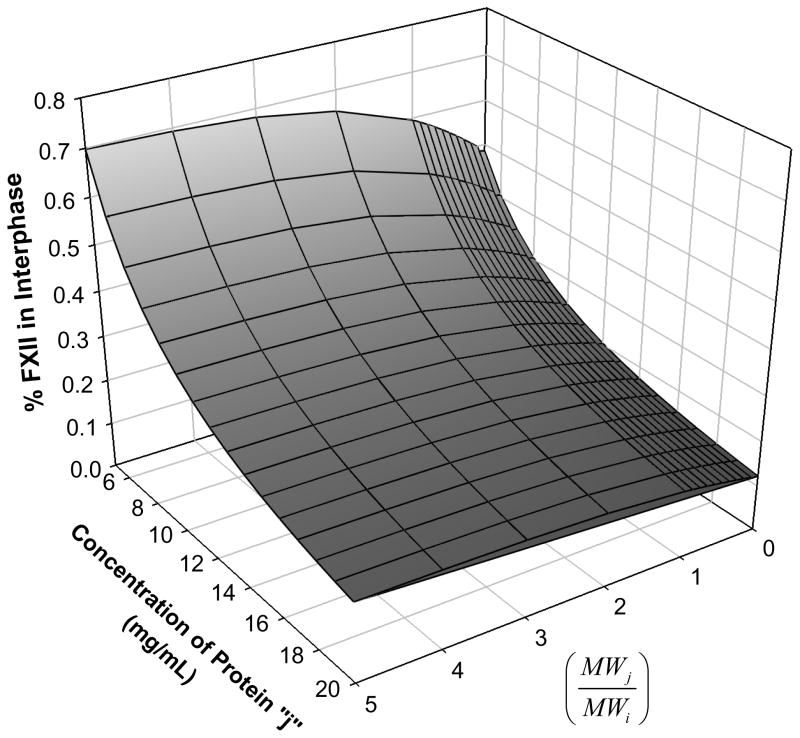Figure 7.
Binary-competition model of the “adsorption-dilution effect” on blood Factor XII (see Appendix A for computational details). FXII (protein i) at physiological concentration competes with a hypothetical protein j with variable molecular weight measured by the ratio . Solution concentration of FXII is fixed but protein j concentration is variable. The computed surface shows that high relative concentrations of protein j is effective in diluting FXII from the surface, especially for lower representing j proteins that are smaller than FXII. But even high concentrations of smaller proteins ( ) fail to compete away all FXII at the surface. Residual adsorbed FXII can hypothetically undergo autoactivation ( ) even in the presence of an overwhelming concentration of other proteins, possibly accounting for the observed sluggish coagulation of blood plasma in contact with hydrophobic procoagulants.

